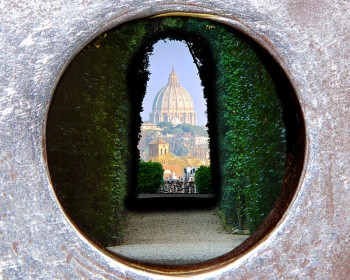Undoubtedly, one of his most iconic masterpieces, Michelangelo’s “Creation of Adam” has long been a worldwide topic of debate and fascination among scholars, philosophers and artists.
As an iconic sculptor, Michelangelo was initially hesitant to begin his painting work on the Sistine Chapel’s ceiling when commissioned by Pope Julius II in 1508. The most debated of the breathtaking frescoes he created up until 1512 for the chapel’s ceiling is, without a doubt, the Creation of Adam which, as made clear by the title, depicts the moment God gave life to Adam from the Book of Genesis.
In 1990, Frank Lynn Meshberger, M.D proposed that the painting may be hiding an anatomical depiction of the human brain and that the depicted God is superimposed on the emotional side of the brain, the limbic system. Michelangelo Buonarotti was known for believing in the creative power of his mind, attributing his success to this power and developing it continuously over the course of his life. He famously stated that divine guidance came through the intellect, as it was the gift of God.
His painting shows the spark of life is being transferred from God to Adam, as Meshberger theorizes, he is being endowed with the creative power Michelangelo dedicated his life to nurturing. God’s right arm reaches out to Adam through the prefrontal cortex, the area of the brain that deals with creativity.
Analyzing the different sections of the fresco, along with their neuroanatomic matches in the brain, Meshberger was able to decode the painting from his proposed perspective. He demonstrated that the image behind God is compatible with the human brain.
Thus, he concluded that the hidden message within genius Michelangelo’s painting is that God is bestowing Adam with the gift of the intellect and that it is by using this great gift that man may reach his highest potential and bring all things his mind develops into creation.
Whether you believe this theory or not, there is no doubt that this breathtaking painting is a glimpse into the mind and heart of Buonarotti and that it is very much a part of the powerful philosophy he engaged in. And so, like all the great works of art, it is a hidden message, a gift from the subconscious mind of the artist that created it.
Michelangelo’s “Creation of Adam” mirrors his deepest belief and is a metaphor for his creative process. The one he engaged in to create everlasting works of art such as the David, the Pietà or the Last Judgement.
Visiting the Sistine Chapel is a priceless opportunity to touch the mind of one of the world’s greatest genius artists!






